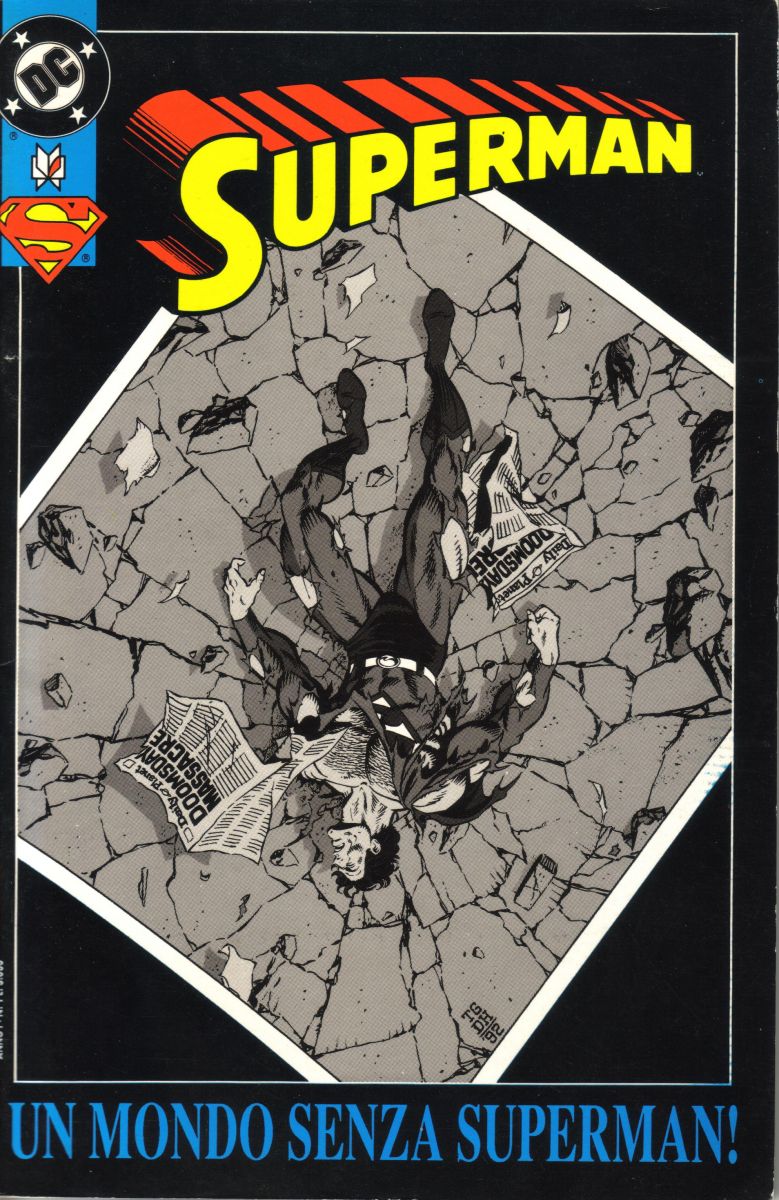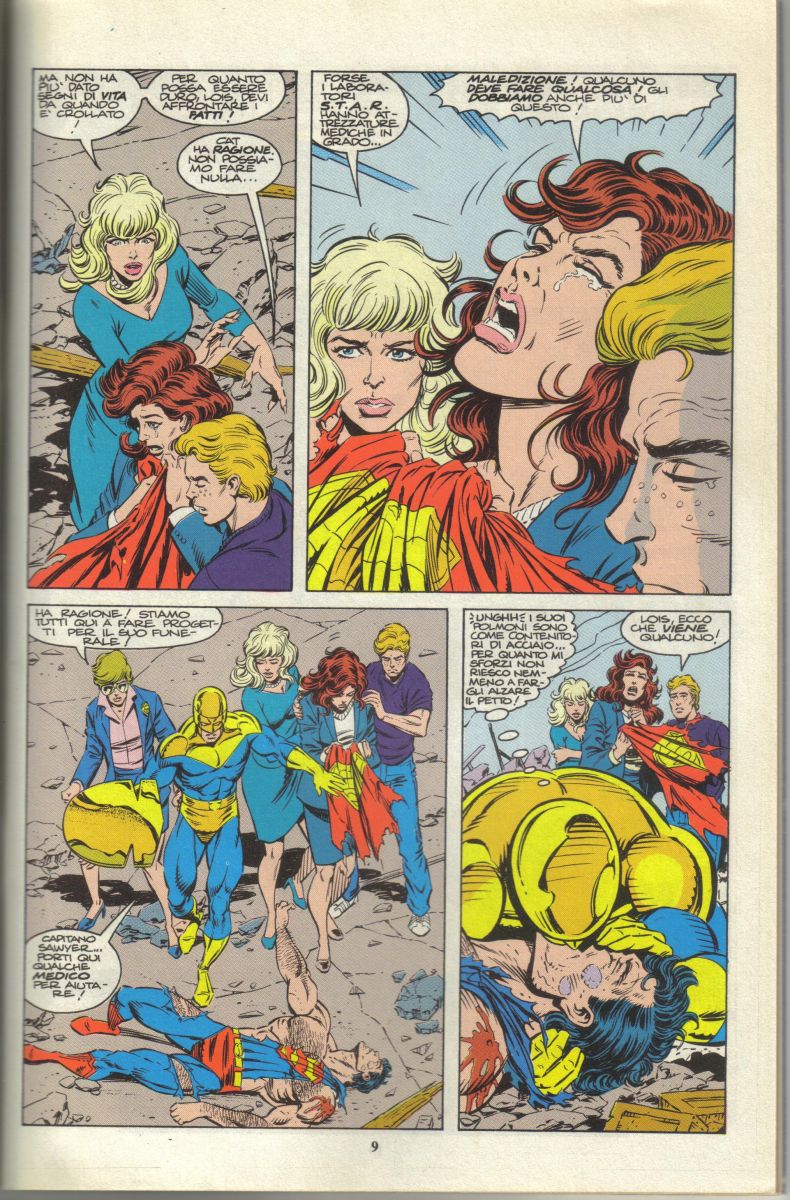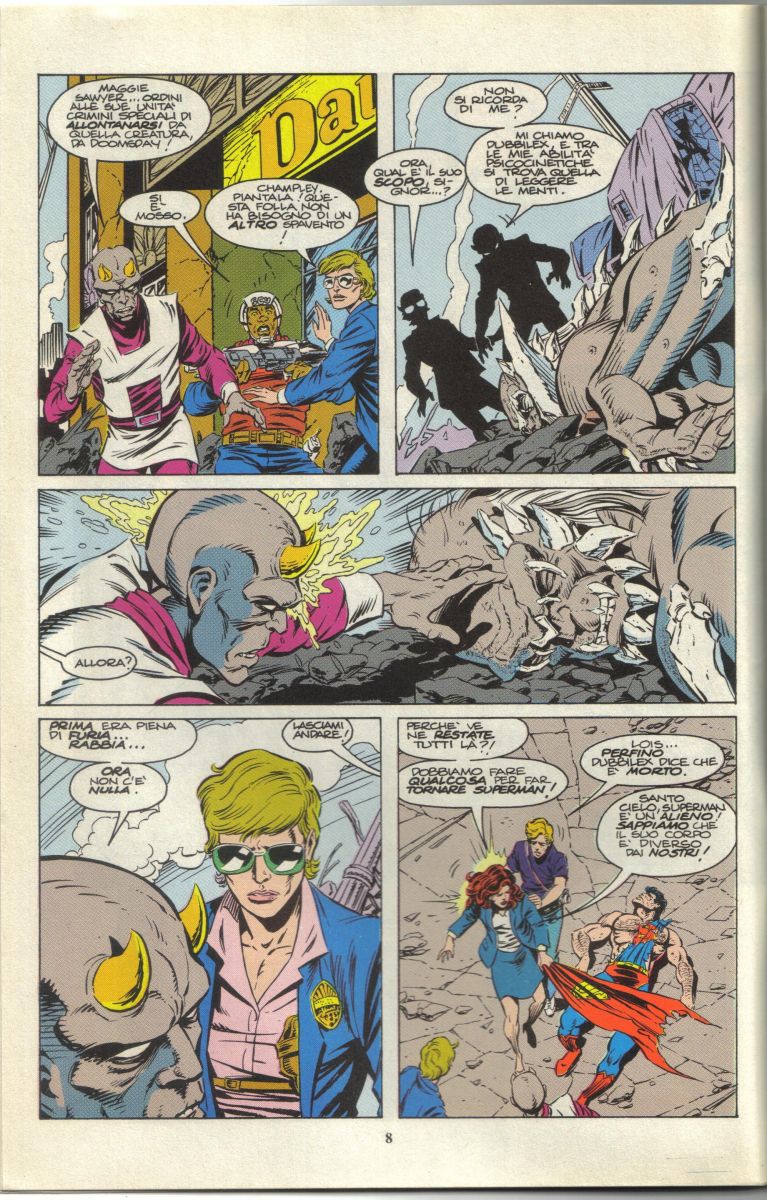Quick note: I know I mentioned in the comments of last week’s post that I would continue the interesting ongoing discussion on the origins and place of mutants and mutations within humanity and the Marvel Universe, but that will have to wait. I just didn’t have the time to fully research the things I wanted to talk about for reasons that will become readily apparent.
—
Greetings from abroad! I’m not in the United States this week but wanted to make sure I brought you a column of some kind. So I was struck with a peculiar notion. At iFanboy we praise artists that can tell the story of a book so well the words on the panel are almost unnecessary. This is all done through a careful combination of panel layout, imagery that pops off the page and characters that can act. Well I decided to put that to a “scientific” test, of sorts.
I happen to have two issues of comics in Italian, one issue of Superman and the other Batman. My thinking is that with the text of the issue translated to Italian, and thus becoming unreadable to me, I would be dependent of the art to tell the story start to finish. For all I know they may be poor translations but that should be inconsequential to the study I was performing. With all that in mind, I sat down with each issue and tried to get something out of them. Below are my results for Superman.

Superman: Un Mondo Senza Superman!
In the interest of full disclosure I should probably mention that I speak Spanish pretty well. Certainly not fluently but I can get by. Also, as a scientist I’ve had to pick up more than a phrase or two of Latin. So try as I might, I may have inadvertently gleaned a word or two as I looked through the issue. But this conveniently, brings me to my first point. (If you want to try the experiment yourself scroll to the bottom of the column.)
Observation 1: It’s hard not to go straight to the word balloons
As readers of comics our eyes just seem to be drawn to those balloons no matter. So much so that I think a crafty writer could actually take advantage of this for some neat storytelling applications. If you’ve ever given a non-comic reader their first funnybook you may have noticed that they seem almost confused by the entire procedure for reading the book at all. I’ve had to explain how to move through pages and panels until the new reader “gets it.” I have to design a lot of posters and presentations for my work and I take the lessons of “guiding the reader’s eye” very seriously when thinking about layout and flow. It’s an important aspect of comics for which the workhorse is largely the letterer.
This meant that as I “read” (which I’m hesitant to call this experience since I was actively trying to avoid the words) my eyes tended to land on a word balloon and hover basically until I realized there was no information the language center of my brain could decipher. Then I’d kind of just lazily glance around the page in no particular order. This may have been exacerbated by exhaustion so feel free to repeat my experiment yourself (like a real scientist!) and see if you have a similar experience.
Observation 2: Talking heads vs. Melodrama
I think talking heads are one of the necessary evils of comics. For purposes of space and efficiency of storytelling sometimes characters just need to talk back and forth within tiny boxes just to get us, the reader, to the next story beat. It usually doesn’t bother me (expect maybe some of those early issues of Powers, sorry Bendis) and when it’s written well or drawn expressively it is quite a treat. But imagine reading a Bendis book if you didn’t understand a word of English. Not only would it be a mess, it probably wouldn’t tell you much about what was going on. This is the problem I ran into several times while reading this story. There were pages devoted to Perry and Jimmy talking, or Lex lecturing Supergirl, and without prior knowledge of who these characters were and why they were interacting there just wasn’t a whole lot there. This is on top of the fact that I’ve actually read this story before in English! Sure I don’t remember the details, but when pages of back-and-forth talking seem to have no consequence it tended to diminish my enjoyment.
The melodrama on the other hand was downright fantastic. I think we all accept that comics are melodramatic, and are essentially soap-operas with capes, but I think using appropriate dialogue often tempers how outlandish some of the scenes, outfits and character really are. The poses everyone strikes, gesticulating wildly in every instance and the wild expressions (including the fact that everyone is basically crying the whole time) were just fun. To be fair, it may have helped that I was reading it in Italian so the gestures just made sense. Point being, and I’m hardly the first to make it, is that having your characters DO something while communicating greatly enhances how much narrative information can be gleaned from a scene regardless of the words on the page.
Conclusion (sort of):
I still have a Batman issue to read, so I won’t say anything definitively just yet, but I definitely think for this issue the experiment was kind of a failure. Even having read this book in English, albeit some time ago, I was lost in the story, had a hard time following panel transitions and was bored when it was nothing but people talking back and forth. It also doesn’t help knowing this is a snippet of a much larger story and I can only imagine how tough it would be for someone picking this up as their first comic regardless of language. Then again, we do advocate a “start wherever and figure it out” policy here at iFanboy, so maybe I should abide by that.
TRY IT YOURSELF!
For your viewing pleasure I’ve scanned two consecutive pages out of the book for you to make sense of. If you speak Italian then it won’t work, but otherwise have fun figuring out what’s happening, and feel free to provide your own dialogue in the comments.
Thanks for reading! Check back next week for Batman!
Ryan Haupt had a really hard time figuring out why an old couple in Kansas was so upset by the man in ripped up circus clothes dying. Maybe he should pick up the next issue. In the meantime, hear him speak English on the podcast Science… sort of.




Great, now I have to go dig out those Italian Spawn comics my mom brought me back in the day.
Give those “unlettered preview” pages a look on CBR every once in a while. Better yet, compare them side-by-side on the “Comics Coming Out Today” entry, out most Wednesdays. 9 times outta 10, providing there isn’t a heckuvalot of talky-talk, the page reads better without the narration/throw away dialog.
<!– /* Font Definitions */ @font-face {font-family:”
its very important to me to be able to figure the story out through the panel progressions. On occasion i will get help up with the action or the pacing because the panel art isn’t moving me the right way. Also, i frequently get held up on full spreads where the panels kinda stick to the page instead of bleeding across the gutter…basically i’ve read the stuff in the wrong order and got totally confused. happens more often than i’d like.
It’s interesting that you mention the eye being drawn instantly towards speech balloons. I find myself immedately skimming my eye over the art first (which often spoils things for me, albeit in a minor way), but when taking the story in panel by panel, I am totally focused on the balloons to the point where the art fades into the background. I find that kinda stuff (perception, etc.) fascinating.
If anyone hasn’t read Scott McCloud’s “Understanding Comics,” you should. There are some other great pieces out there, too, that get to the point, but McCloud uses graphic illustration to show that what makes comic art unique is the combination of word and picture. sometimes we see whole books printed with no dialogue on purpose, and sometimes it’s done well (Goon #33), sometimes not so well (Fantastic Four #588 – glug). but what actually makes graphic storytelling good is the interdependence between word and image, that neither can tell the complete story alone. so I suppose in this case, if you can’t understand the Superman issue without the words, then the form is being executed pretty well. and maybe that’s what bothers me quite often with Bendis’s work – so much dialogue that the pictures are, as you say, merely superfluous talking heads. not always avoidable in scenes of necessary dialogue, but there are definitely creative ways of getting around it.
That fella with the shield is obviously the dead guy’s lover. See how they kiss in the last panel?
I like that Superman doesn’t shave his chest. Take note